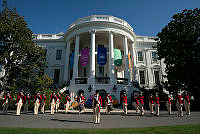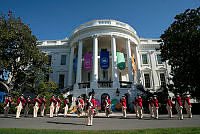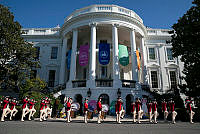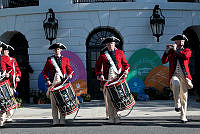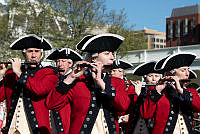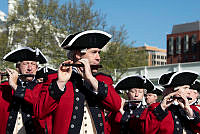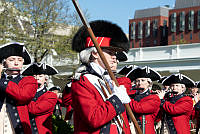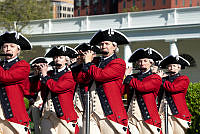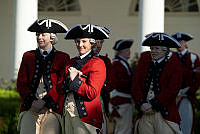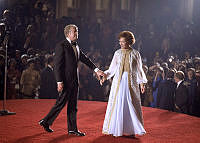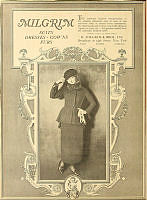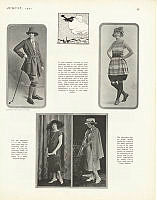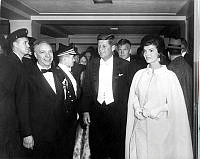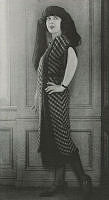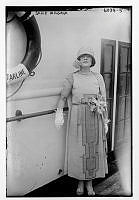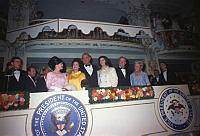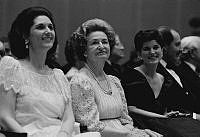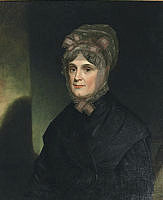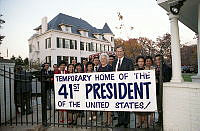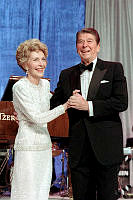An Essay on "A Favorable Day" by Peter Waddell
The White House Stables on the Day of Grant’s Second Inauguration, 1873
Copyright © White House Historical Association. All rights reserved under international copyright conventions. No part of this article may be reproduced or utilized in any form or by any means, electronic or mechanical, including photocopying, recording, or by any information storage and retrieval system, without permission in writing from the publisher. Requests for reprint permissions should be addressed to books@whha.org

Peter Waddell, A Favorable Day, oil on canvas, 48 x 60.
Peter Waddell for the White House Historical AssociationDawn breaks over the White House stables on March 4, 1873. The grooms and coachmen are up early to prepare for President Ulysses S. Grant's second inaugural parade. Details have been taken by the artist from historic photographs. The carriage in the picture, which was a sporting vehicle made to accommodate hunting dogs, still exists.
This stable was the fourth built at the White House. Designed and built in 1871 by the government architect Alfred B. Mullett, it was ample in plan, the lower floor outfitted with twelve wooden stalls and stone-paved floor. The African-American staff lived upstairs, where rooms were provided for the two grooms, Charlie Lee and Jerry Smith, and an apartment for the stable master, Albert Hawkins, who is represented at the left of the picture.
Jesse Grant, the president's youngest son, and Nellie, his only daughter, kept their ponies here and remembered the easy pace of the daily conversations their father had with Hawkins about horses. President Grant's favorite was the thoroughbred Cincinnati given to his care during the war by a dying man. The president found Butcher's Boy, later his famous harness horse, pulling a meat wagon; the butcher demanded and received the outrageous price of $600. Jeff Davis, with an easy gait, was captured by Union troops in Mississippi. Algonquin and the beloved Egypt were distinguished veterans of the general's Civil War battles.
Government vehicles assigned to the president were kept washed and polished in the stable and included the formal carriages, a barouche, a phaeton and an elegant landau, in which First Lady Julia Grant made her weekly social calls. A light market cart transported the children to public school, and a broad-gauge road wagon served on deep-rutted country roads. Extensively remodeled in 1890, the stable continued to be an integral part of White House life until its conversion to a automobile garage in 1909, and demolition two years later.










